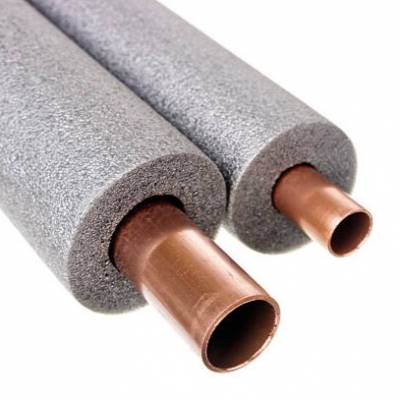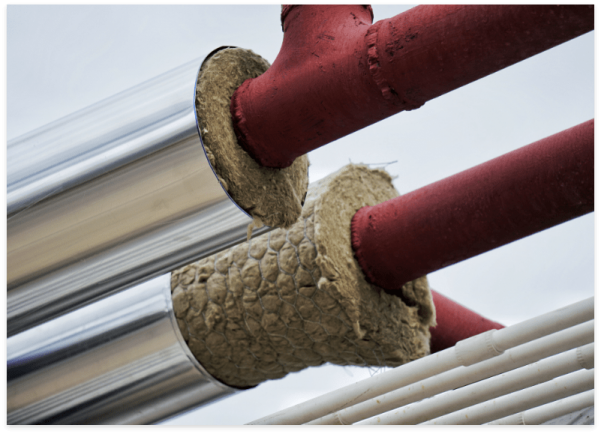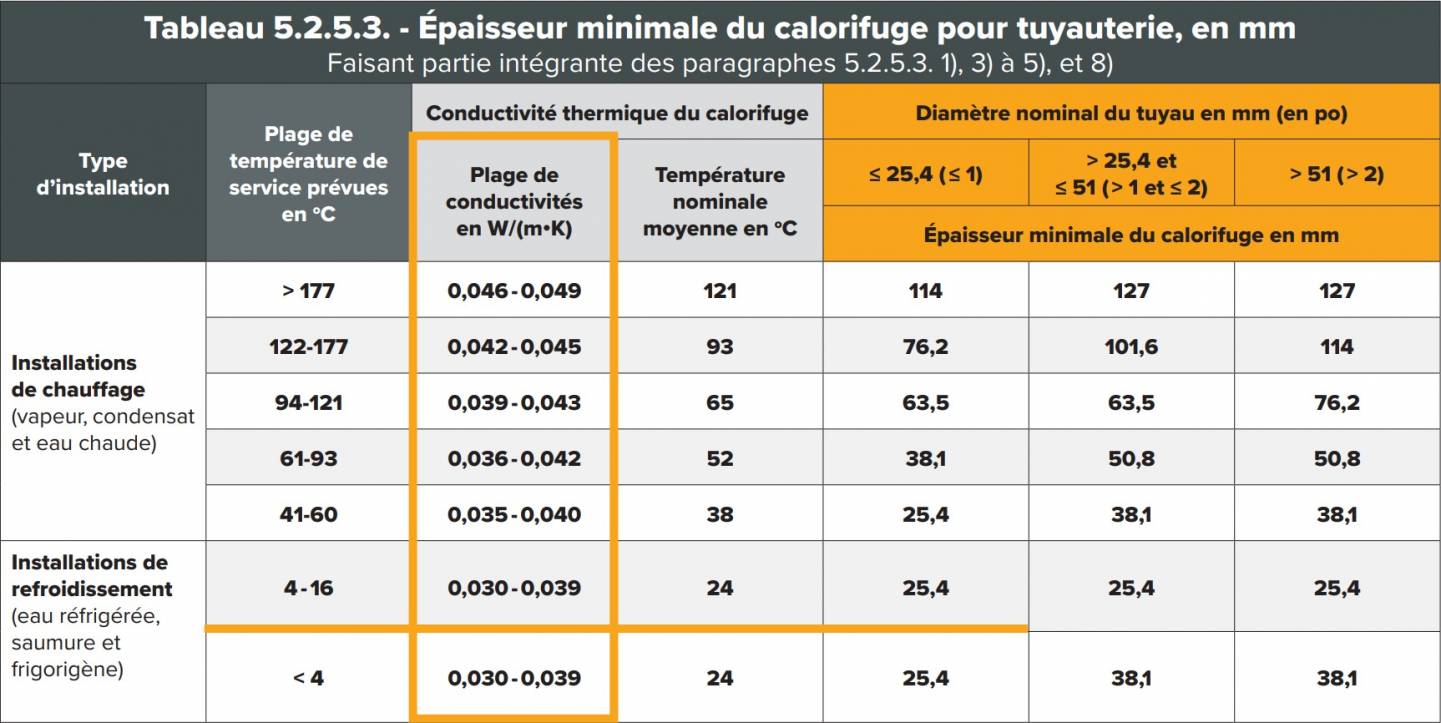
Should all the pipes in a building be insulated, whether the circulating water is hot or cold? The answer is both simple and complex. But first, let understand what it is.
What is pipe insulation?
Explanation of the process: Pipe insulation consists of wrapping the pipes that carry hot or cold liquid, which need to maintain their temperature, with a sheath to thermally isolate them from their surrounding environment. Typically, these sheaths are made of mineral fibers or even plastic (elastomer).

Figure 1 : Example of insulation
Installation Process:
- Check and analyze the current condition of the pipes and their immediate surroundings.
- Repair any previously identified defects, as once the pipes are insulated, leaks cannot be visually and quickly detected.
- Install the appropriate insulation. If the pipes are located outdoors or in an unheated environment, it's important to add additional insulation such as a vapor barrier.
Advantages and Disadvantages:
There are significant advantages to pipe insulation:
- Energy savings: Pipe insulation helps prevent the loss of heat when fluids travel a significant distance from their heating point to their point of use, thus improving energy efficiency. Conversely, in cooling systems, insulation allows the liquid to maintain its low temperatures.
- Cleanliness and safety of the installation sites: Insulating pipes prevents condensation from forming on the pipe's surface, thus reducing the risk of water accumulation on the ground beneath the pipes. In unheated environments, insulation prevents ice formation inside or outside the pipes, which could lead to cracks or pipe ruptures.
- Cost savings: Heating the fluid circulating inside pipes requires an energy source, either electrical or fuel-based, which generates operating costs. Limiting energy losses reduces these operating costs and enhances the profitability of pipe insulation projects. The savings in energy costs can quickly offset the initial installation expenses.
However, there are some disadvantages to pipe insulation:
- Initial installation costs: Pipe insulation adds additional costs during the initial installation process.
- Corrosion risk: The choice and quality of insulation can potentially lead to premature corrosion of inadequately insulated components.
Sizing of the sheath (pipe insulation):
The size of the insulation depends on several factors, including:
- The type of installation, heating or cooling,
- The operating temperature range,
- The conductivity of the insulating material,
- The surrounding temperature,
- The nominal diameter of the pipe.

Figure 2: Table on the minimal thickness of the insulation
Note: Table only exists in French version.
This table, taken from a document published by the Association de la construction du Québec, brings together all the factors stated above and allows for the determination of the minimum thickness and the insulation material to be used to adequately maintain the liquid's temperature. While the thickness is determined using the table, the material is determined by calculating the necessary thermal resistance factor.
For example, for a pipe with a nominal diameter of 25.4 mm or less, used in a heating system with a temperature range of 122 to 177°C, the insulation material chosen should have a thermal conductivity between 0.042 and 0.045 W/(m*K). The thermal resistance factor is calculated by dividing the conductivity by the nominal diameter, i.e., conductivity/nominal diameter. In this case, the thermal resistance factor should be between 0.56 and 0.60 Rsi.
Recommendations:
In residential or commercial buildings, when insulating heating pipes as well as other pipes carrying fluids at a constant temperature, the use of pipe insulation should be considered, especially if the pipes travel long distances in varying environments.
Reference:
Prabat. Calorifugeage. https://www.prabat.fr/nos-solutions/calorifugeage/
ACQ.org. Efficacité énergétique. https://www.acq.org/wp-content/uploads/2021/08/residentiel-fiches-techniques-efficacite-energetique-fiche5.pdf
Publications-cnrc.canada.ca. Code national de l’énergie pour les bâtiments du Québec 2017. https://publications-cnrc.canada.ca/fra/voir/td/?id=25682fbd-0aa6-4e4d-8f0d-1e8d3c0eb43c&dsl=fr . Tableau 5.2.5.3. p.153
Copropriété. Hellio. Définition du calorifugeage et avantages en rénovation énergétique. https://copropriete.hellio.com/blog/renovation-energetique/definition-calorifugeage
Pacte-énergie-solidarité. Tout savoir sur le calorifugeage. https://www.pacte-energie-solidarite.fr/travaux-energetique/isolation-thermique/calorifugeage